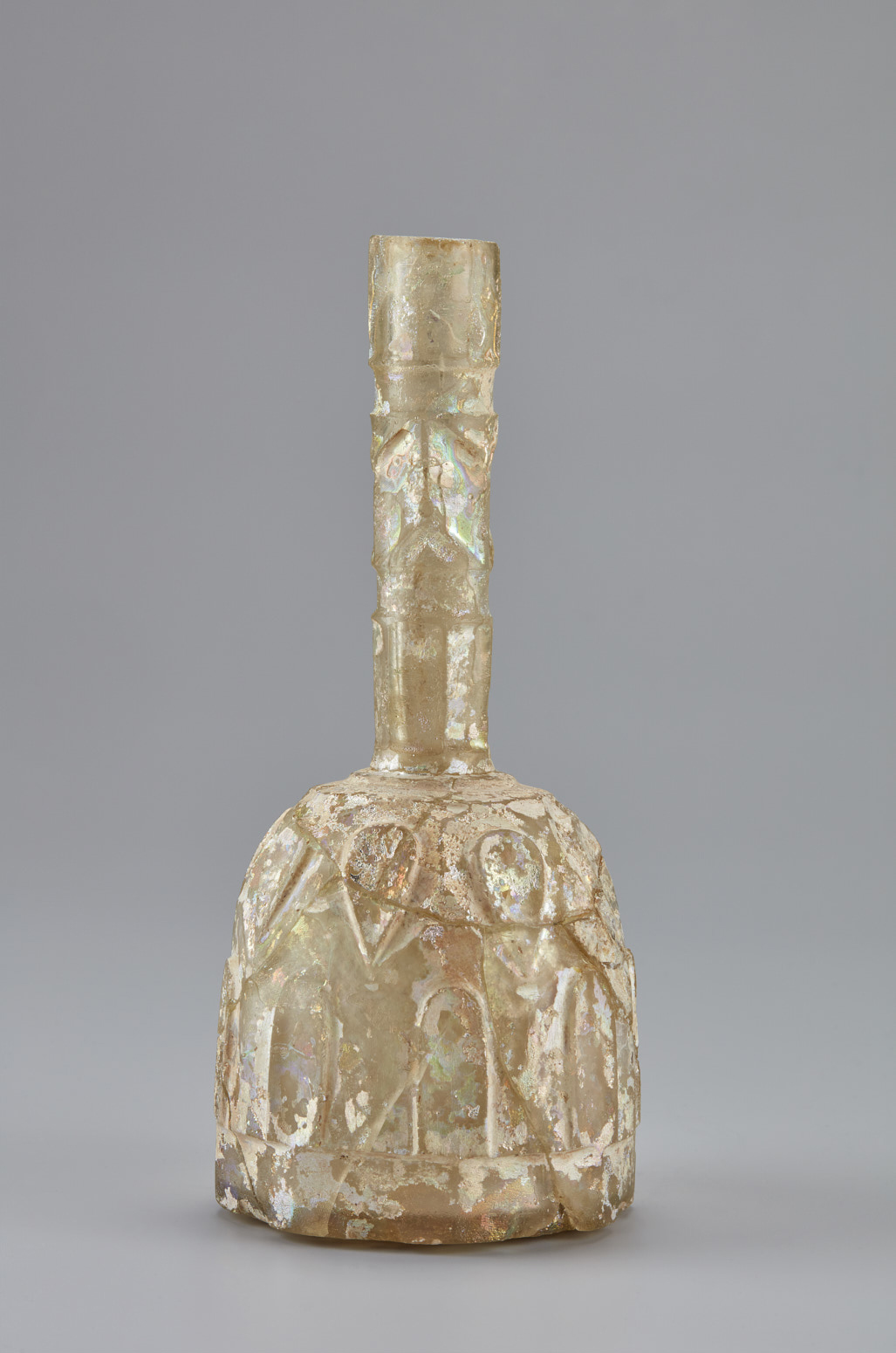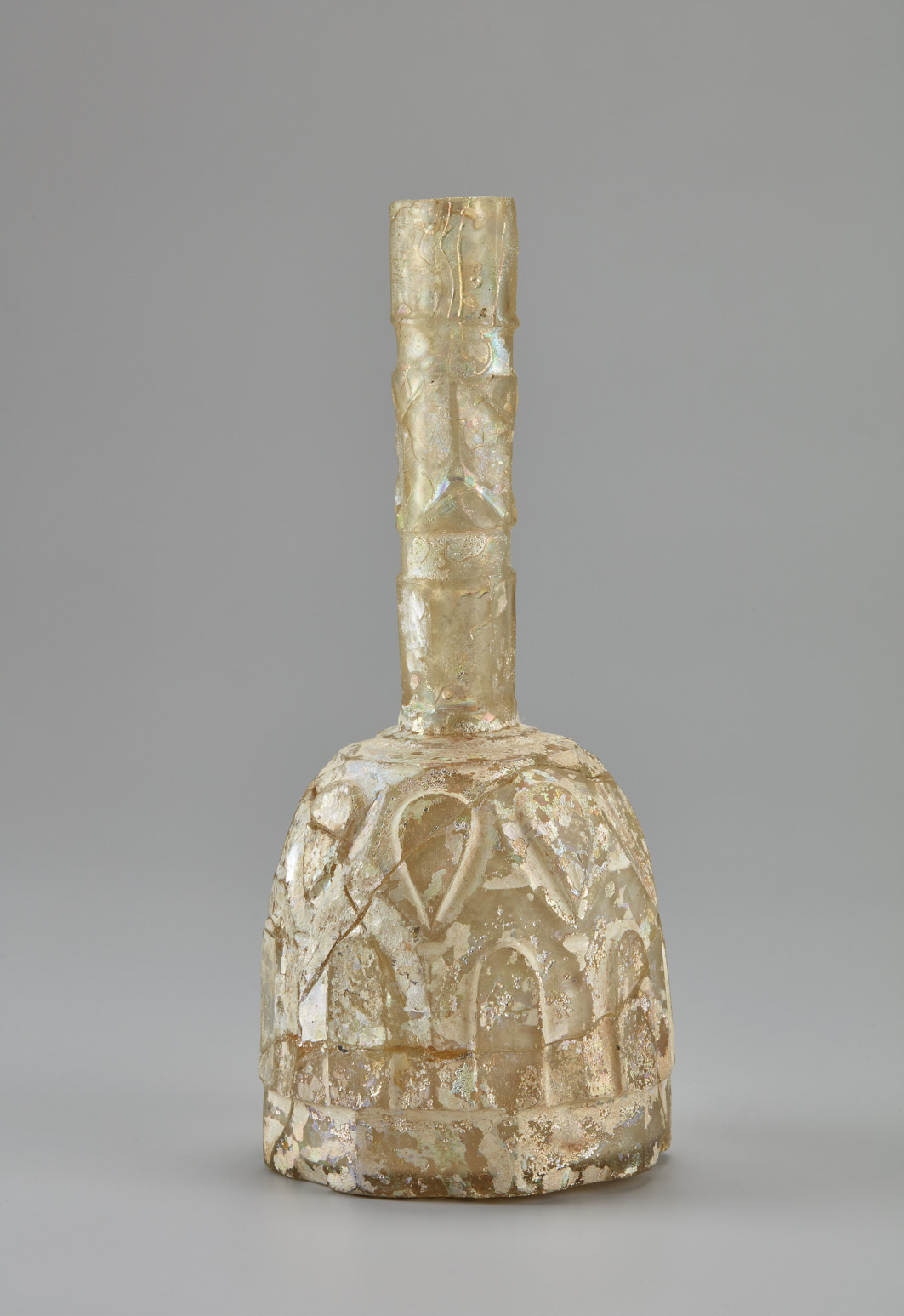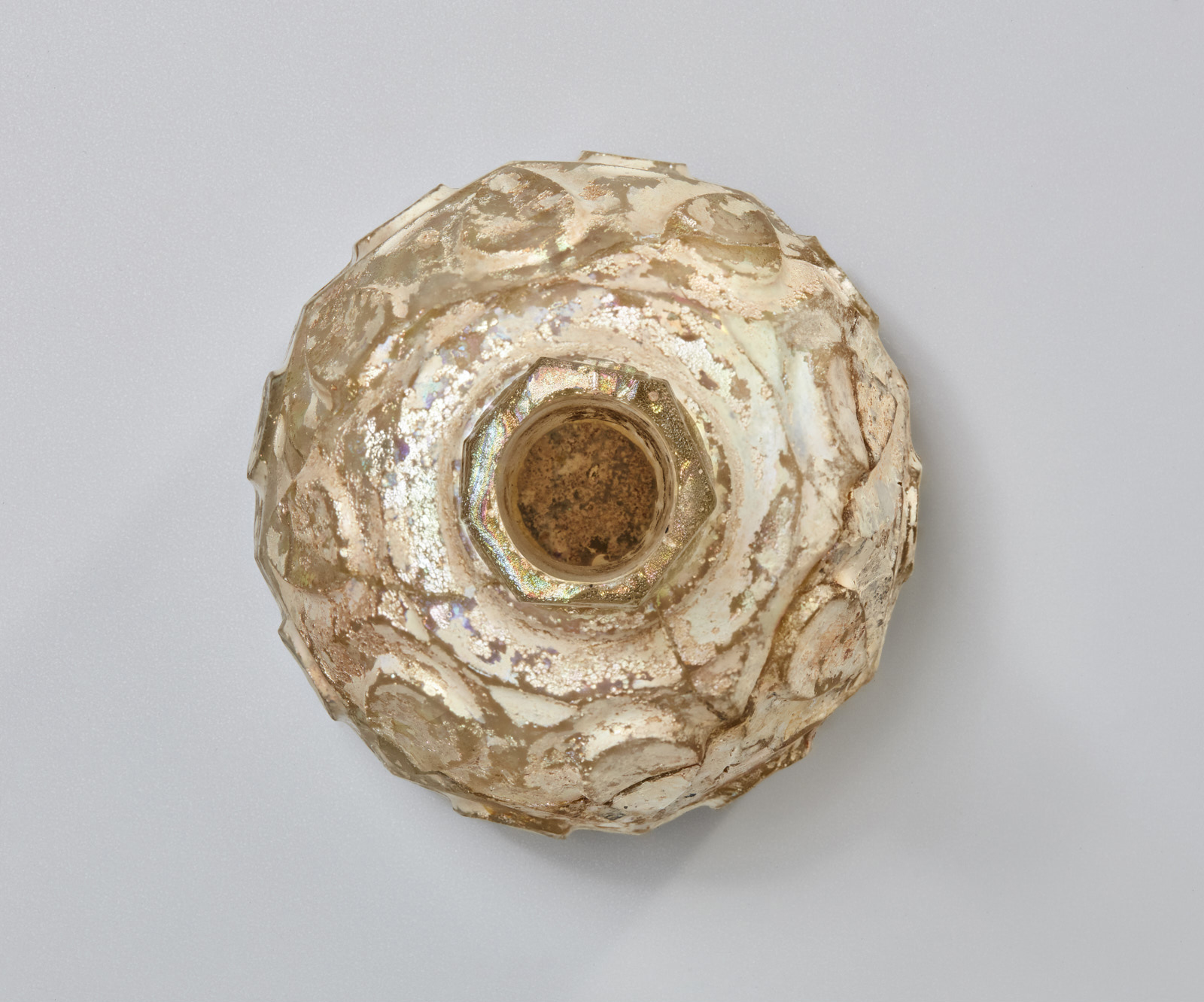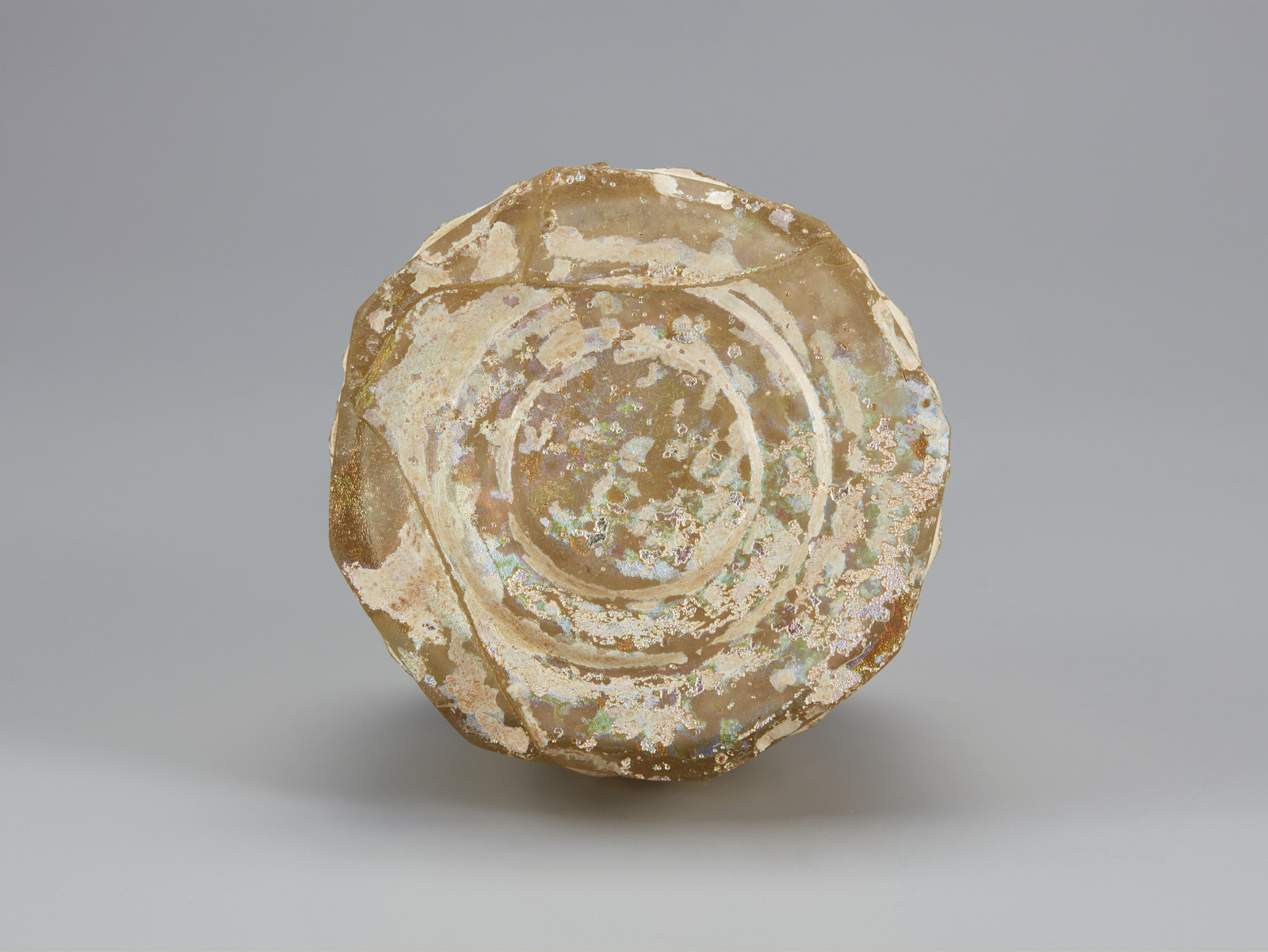Click on the image to zoom
Bottle
- Accession Number:AKM646
- Place:Iran
- Dimensions:height: 19.3 cm; diameter: 8 cm
- Date:9th - 10th Century
- Materials and Technique:glass, colourless, silvry-white iridescence; blown, relief cut, tooled, worked on the pontil
Glass vessels embellished using the relief-cut technique hold a special place in the history of Islamic glasswork. Though many such vessels were produced, only a few exceptional examples with complex cutting patterns survive today. One such example is this bottle in the Aga Khan Museum Collection. It can be dated to the 9th or 10th century, for outstanding examples of geometrical relief-cut decoration only emerged during this relatively brief period. Iranian glasshouses seem to have specialized in these patterns.
Further Reading
Initially this bottle which was recovered from numerous fragments, must have been blown to a considerable thickness in order to withstand the process of embellishment; relief cuts, accomplished by grinding, would take away much of the surface. A pontil mark under the flat base would have been necessary for tooling the vessel and the neck before they were cut. This mark was ground away in the carving process and two concentric ridges were cut to decorate the base.[1]
The abstract geometrical pattern on this bottle—which covers the dome-shaped body and long, hexagonal neck—would have been well-planned beforehand. It is extremely complex and quite specific to Islamic glasswork. The main frieze on the body has a pattern of elongated arcades consisting of rectangular panels with curved, arch-like tops. It rests in turn on a frieze of short rectangular panels with additional oval half-cuts where they meet the base. The rectangular panels are framed by faint, slender ridges topped with a triangular capital. Above the main arcade, a frieze around the shoulder has concave oval or hexagonal panels segmented with larger, concave almond or tear shapes. Slender ridges sit between the hexagonal panels with small triangles in the upper and lower spandrels. The almond segments point with their triangles towards the capitals below them. Two steps on the shoulder lead to the neck, which has been cut from a cylindrical shape to a six-sided form with facets. The neck has three horizontal bands interrupted by two undecorated minor bands. The top and the lower band have vertical facets, while the band in the centre has been cut with facets of parallelograms.[2]
Our knowledge of the glass artisans and the glass workshops is still very limited. Not a single excavation in the Iranian region has uncovered a large number of glass vessels. During the excavations in the region of Nishapur in northeastern Iran, only a very limited number of relief-cut glass fragments were found. None was of comparable quality to this bottle in the Aga Khan Museum Collection.[3]
Dome-shaped bottles, usually with short necks and with related abstract patterns, have survived in a number of collections. Such evidence demonstrates that these abstract patterns must have been immensely successful.[4] A pattern with almond shapes on the shoulder was also copied in mould-blown glass, and it is probable that some of these cheaper imitations were produced in Egypt.[5] Apart from geometric patterns, compositions with birds or other animals were also cut in relief. Many surviving vessels are of colourless glass, which may have been meant to imitate rock crystal; others use a palette of different colours such as light blue, light green, and bluish green. Outstanding compositions were also achieved in cameo glass, a process in which colourless glass was covered by a glass layer in a contrasting colour. When carved, a pattern would stand out in a coloured outline against the colourless ground.[6]
— Jens Kröger
Notes
[1] Whitehouse, 222–223, no. 370 (on the base two concentric countersunk discs).
[2] For similar shaped facets, see Kröger, 128, no. 173.
[3] Kröger, 120–146.
[4] Carboni, 92–93, no. 23a-b 9.-10th c. and 123 no. 2.27; Whitehouse, 222–223, no. 370.
[5] Kühn, 116–117, no. 27.
[6] Carboni and Whitehouse, 182–186, no.87-90.
References
Carboni, Stefano. Glass from Islamic Lands. The Al-Sabah Collection. Kuwait National Museum. New York: Thames and Hudson, 2001. ISBN: 9780500976067
---. and David Whitehouse, with contributions by Robert H. Brill and William Gudenrath. Glass of the Sultans. New York: The Metropolitan Museum of Art; Corning, NY: The Corning Museum of Glass; Athens: Benaki Museum; New Haven: Yale University Press, 2001. ISBN: 9780300088519
Kröger, Jens. Nishapur. Glass of the Early Islamic Period. New York: The Metropolitan Museum of Art, 1995. ISBN: 9780300192827
Kühn, Miriam with contributions by Andrea Becker and Jens Kröger. Vorsicht Glas! Zerbrechliche Kunst 700–2010. Berlin: Museum für Islamische Kunst - Staatliche Museen zu Berlin, 2010. ISBN: 9783938832691
Whitehouse, David. Islamic Glass in The Corning Museum of Glass, Vol. I. Corning, NY: The Corning Museum of Glass, 2010. ISBN: 9781555953553
Note: This online resource is reviewed and updated on an ongoing basis. We are committed to improving this information and will revise and update knowledge about this object as it becomes available.








